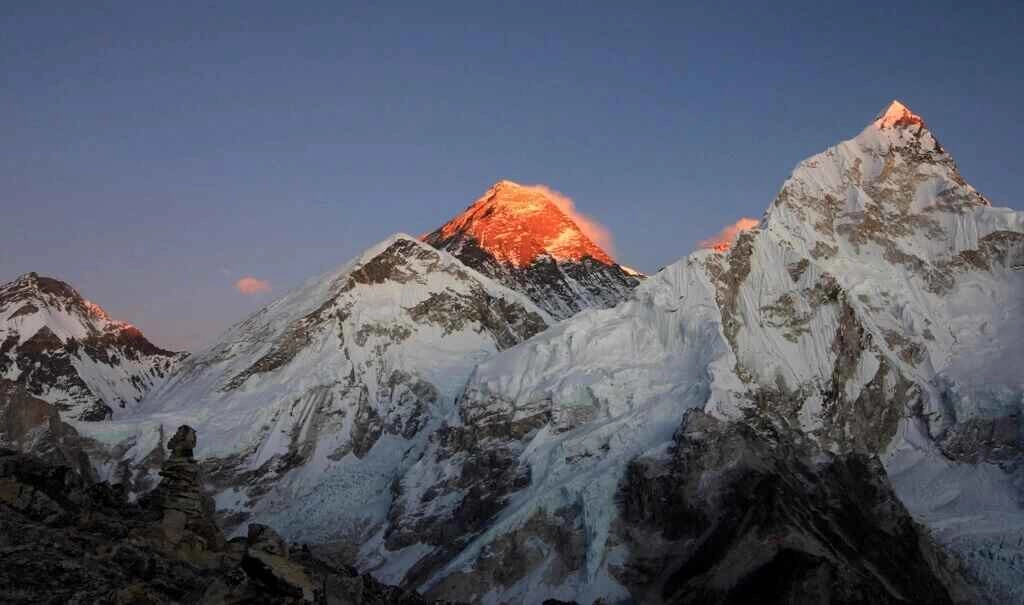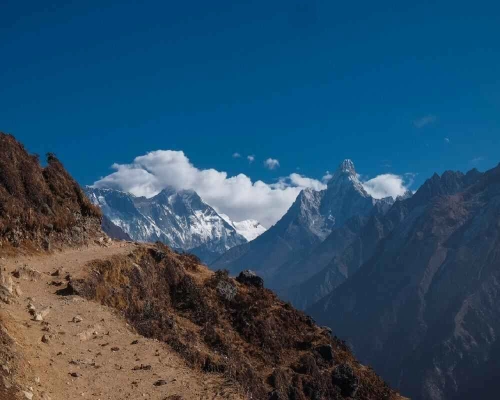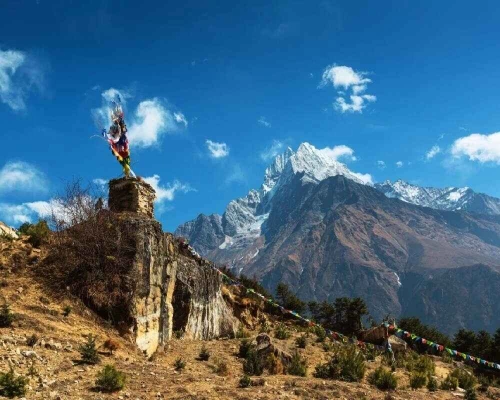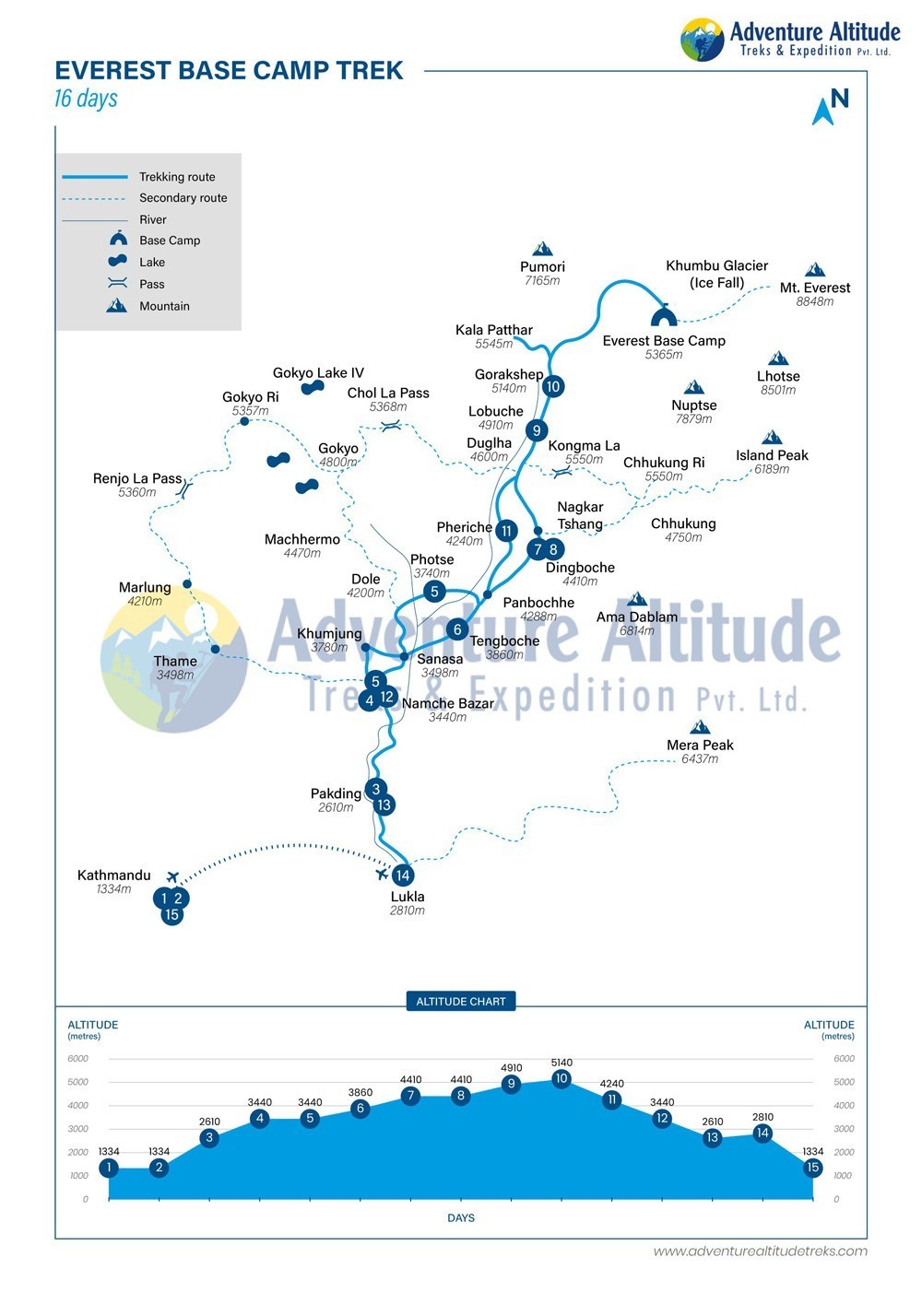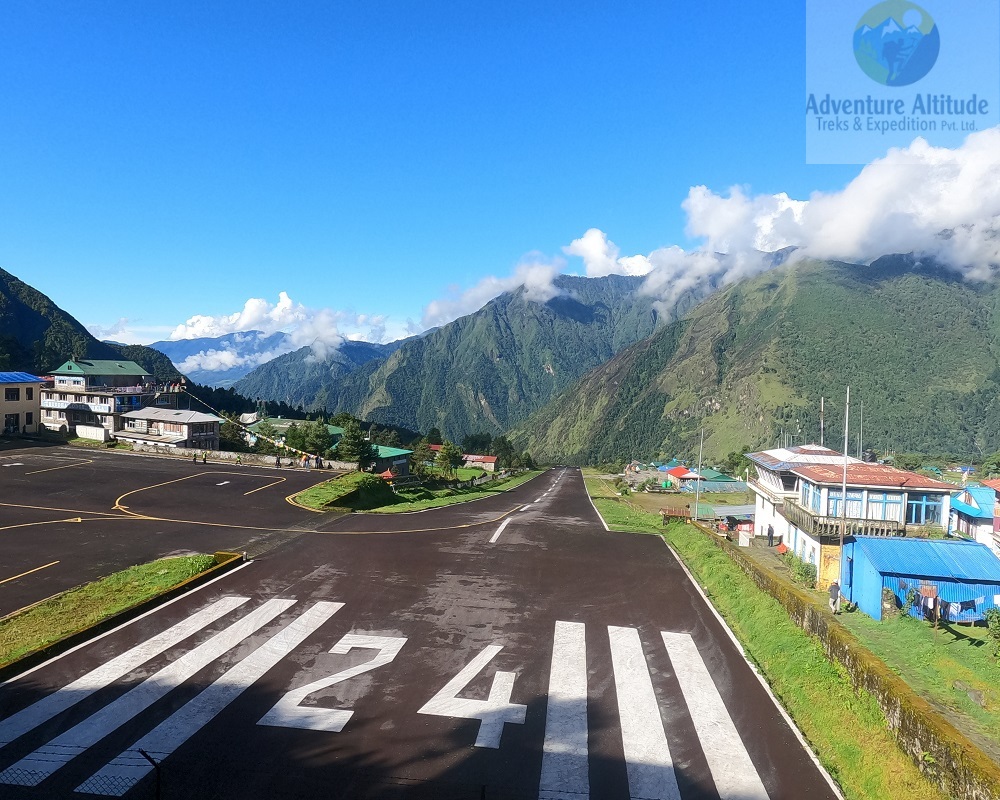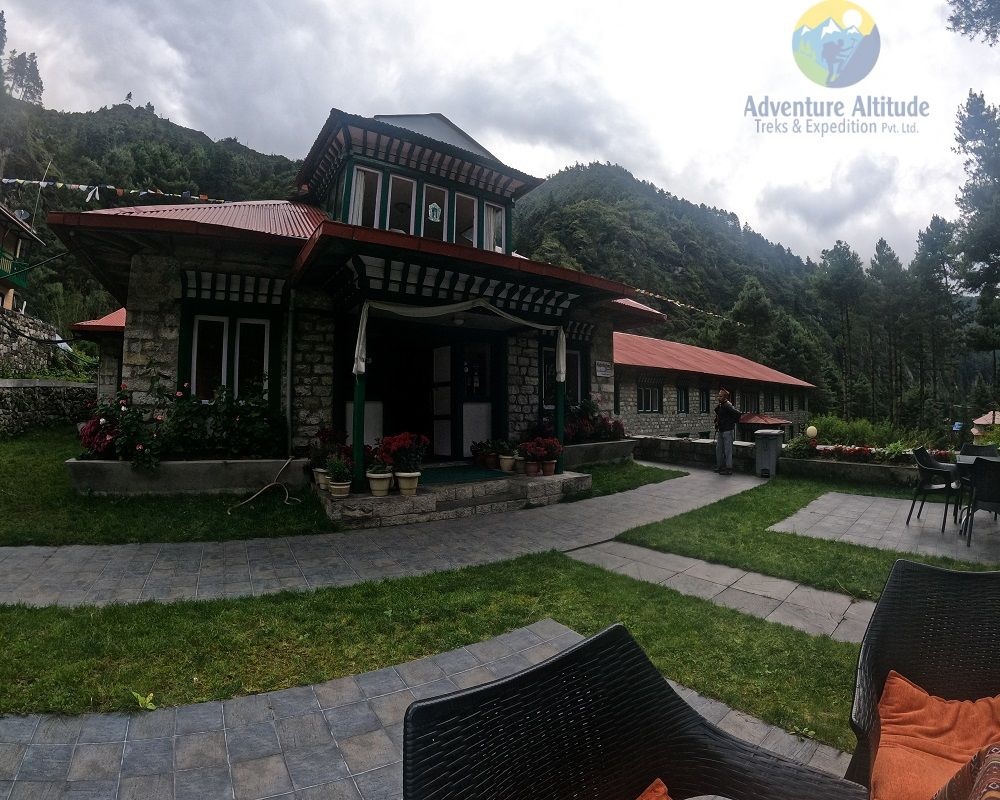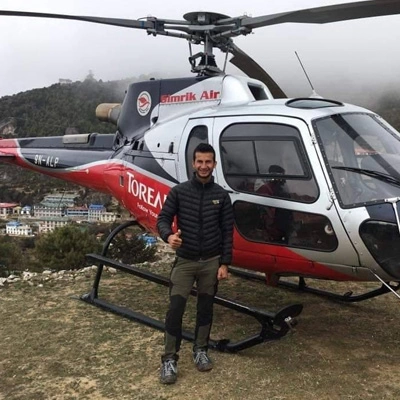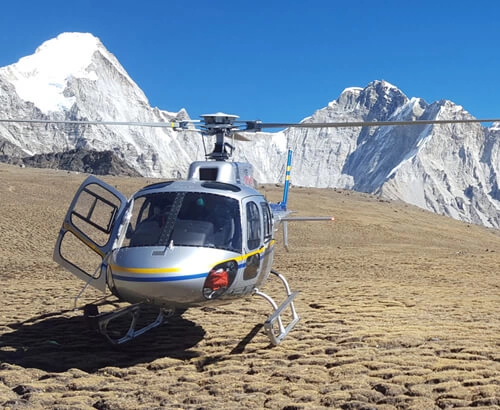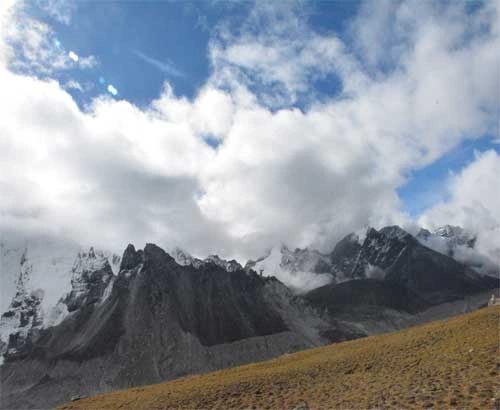The Everest Base Camp trip is a legendary adventure into the heart of the majestic Himalayas, providing breathtaking views and insight into Sherpa culture. Beginning at Lukla, the trail goes through lush valleys, dense forests, and high-altitude terrain, passing by lovely Sherpa communities like as Namche Bazaar. As hikers travel to Everest Base Camp at 5,364 meters (17,598 feet), they encounter a variety of climates, ranging from subtropical to alpine. Highlights along the trip include panoramic vistas of towering peaks like as Everest, Lhotse, and Ama Dablam, as well as interactions with Buddhist temples and prayer flags scattered throughout the terrain. The height and duration of the journey, which normally takes 12-14 days round trip from Kathmandu, demand moderate physical endurance. It's more than simply a physical struggle.
The Mount Everest Base Camp Trek 14-Day is an adventurous high-altitude tour in Nepal that starts from busy Kathmandu and goes up to Mount Everest base camp. This quest allows us to immerse ourselves in the lovely mosaic of Sherpa culture, admiring beautiful panoramas from the Himalayas and touching Mount Everest. As adventurers, we mainly chose the Mount Everest Base Camp trek package to demonstrate our love for mountains and nature. It invites those who wish to be cuddled in the arms of nature, sprinkled with brilliant Himalayas. In this journey, we will be transported from the culturally rich valley to Sagarmatha National Park – a mesmerizing wonderland of adventure, tranquillity, culture, and tradition combined with nature.
Mount Everest Base Camp Trek is one of the world's most renowned trails, attracting thousands of adventurers annually. From the Khumbu region, at an altitude where Nepal's Mount Everest reaches about five thousand feet above sea level, this journey begins. It covers a distance of 130 kilometers and takes twelve to fourteen days. It is undoubtedly one of those popular places because it makes us victorious over our vision of life. For many travelers, the promise of a bite to invincibility is exemplified by the inaccessible summit of Mount Everest. Beginning this journey is akin to pilgrimaging to Sagarmatha, Goddess of the Sky. So the name of this terminology comes from 'Sagar,' meaning sky, and Matha, which is nearly equivalent to a word that translates as Head.
Following the Southeast ridge pathways is easy both technically and popularity-wise. 953 marked a breakthrough when the groundbreaking duo Edmund Hillary and Tenzing Norgay trooped along this path, which has become increasingly noticeable. For 14 days, we followed the same trek to the EBC trek route once traversed by the first Everest conquerors from Lukla.
Mount Everest Trek is the most famous package in Adventure Altitude Treks. We always focus on providing our clients with the best cost and quality services for Everest Base Camp trips. We have also devised uncomplicated hiking packages for novice and habitual strollers with ample acclimatization days. If you are an authentic enthusiast and relish high-altitude Trips, we recommend this Everest Base Camp Trek Itinerary and route.
Major Features of 14 Days Everest Base Camp Trek
- Reach the base of the top of the world - Mount Everest with Everest Base Camp Trek.
- Namche Bazar is the highest market in the world and a popular stop on the trek.
- Lukla Airport, known for its adventurous landings and takeoffs
- Tangboche Monastery is the Khumbu region's largest and most famous Monas monastery.
- Dudh Koshi River flows through the Namche Bazar area on the Mount Everest Base Camp Trek route.
- Khumbu Glacier and Khumbu Icefall, are some of the highest and largest in the world and are located in the Everest region.
- Sagarmatha National Park is a UNESCO World Heritage Site and home to many natural wonders.
- Enjoy the Easy Booking process for the 14-Day EBC Trek Cost 2025, 2026, and 2027 package.
- Hillary Museum in Khumbu village pays tribute to the first man to reach the summit of Mount Everest.
- Sherpa culture and vibrant monasteries offer a peaceful and cultural experience during the Trek to Everest Base Camp.
What Everest Base Camp Trek Distance Will We Cover?
We will cover the Everest Base Camp trek distance in 14 days, about 127 kilometers. This extent is lacking in the acclimatization hikes in Namche and Dingboche. This range is an outcome of an average path that involves noteworthy points such as Namche, Tengboche, Dingboche Lobuche, and, ultimately, Everest Base Camp.
While 127 km is an extensive distance, worry not because it only takes 14 days, 6 to 7 hours of strolling, and the daily march is about 12 kilometers. This comparatively gentle pace allows acclimatization to the increasing altitude. This involves protracted days and initial acclimatization. You can tailor and condense the itinerary, but we do not suggest changing it to obtain the best experience from the rove.
How Will The Everest Base Camp Hike Be For Me?
The hike to Everest Base Camp will be surreal for us. It is a gratifying hiking journey from the magnificent village of Lukla. The route shows ecstasies, ranging from charming woods to stern lands; this adventure is the expedition where nature's equilibrium between satisfaction and suffering can be observed. This EBC Trek involves all challenges and great blessings because of the joys of climbing over rocky ascents to reach a new top.
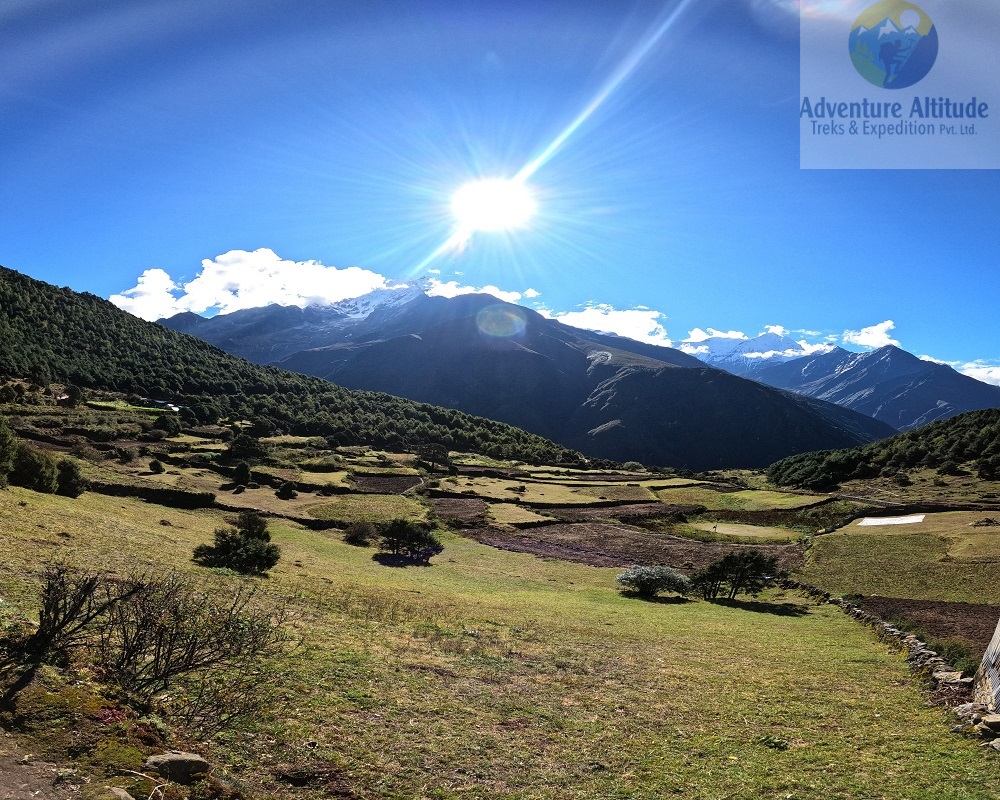
Relish the narrative of Sherpa's life and rhythm in each town, a cultural aspect lending to this once-only undertaking. Finally, at Everest Base Camp, watch the grandeur of Everest Lhotse and Nuptse, which will cause you to freeze your breath for days beyond usual. This journey shows how much one can transform by undertaking that famous road.
Our Experience With Everest Base Camp Trek- 14 Days
We started organizing the adventure for the same reasons as others. We were captivated by its reputation as one of Earth's iconic hikes. As soon as our group began to cross this esteemed path with almost 200 foreign clients yearly, it became apparent why people talk about its grandeur. This authentic Himalayan sojourn brings together people from different ethnic groups and countries. Similarly, more authentic expedition-like features are seen in the 14-Day Everest Base Camp Trek, reflected by the scenic flight to Lukla's small airport and the first footsteps through forested trees that leave Namche Bazaar. Nepal is very different from all others. And in this radiant and luminous country, you hike with us, experience, and get family with what we have been exerting while strolling the Everest region for about 8 years.
Enchanting Escapade: Mountain Paradise Unveiled
This 14-day adventure will be an enchanting escapade for you to the Mountain paradise of the Everest area.
Begin your amazing trip on the wonderful trek to Everest Base Camp (EBC) and meet Himalayan titans in their kingdom of giants. Under the awe-striking presence of Mount Everest, which is 29,032 feet tall, are Lhotse and Nuptse, which give an unbelievable mountain scene. Nature's masterpiece brings the visual harmony of Ama Dablam, which peaked like a pyramid and rocky charm from Thamserku. Peacefully, Khumbu Glacier views flow through this mountainous zone and add something dreamlike. Eternal in our minds will be close-ups of Everest, Pumori, Lhola, and Ama Dablam from Kalapathar.
Kala Patthar's Panoramic Epiphany Beyond Everest Base Camp
We Walk towards Kala Patthar, the haven of roaming adventurers like us who seek an uninterrupted glance at Mount Everest on the Mount Everest Base Camp Trek. The Kala Patthar hike journey is a march that we and our customers cherish together.
Being an experienced travel planner, I believe the Kala Patthar trip with clients has been life-changing. When they look at the clear sight of Mount Everest, it makes them feel amazed and accomplished. In this EBC Trek, The height of the Himalayan mountains shown from the top of Kala Patthar amazes my clients and me, making us pay respect and feel satisfied altogether.
The Everest Base Camp is located at 5,364 m. Topping it became a milestone on my life's list; viewing the lower slopes will be heavenly, and interacting with climbers will be another joyful dimension. In the light of dawn, a walk to Kala Patthar (5545m) reveals Everest under the morning sun as an inexplicable view.
Everest Base Camp Trek Cost For 2025, 2026, and 2027
The 14-day Everest base camp trek costs $1400 per person for 2025, 2026, and 2027. We, too, offer a group tour or private trip from Kathmandu to Mount Everest Base Camp.
The Trek to Everest Base Camp Cost comes in different packages based on the trip's kind and payment method. The price, however, fluctuates based on the chosen setup to give flexibility in accommodating different preferences and financial capacities.
Book Now, And Get a 10% Off On The Package
| Number Of People | Cost |
| 1-1 Pax | $1400 (Contact Us) |
| 2-6 Pax | $1300 (Contact Us) |
| 7-12 | $1199 (Contact Us) |
